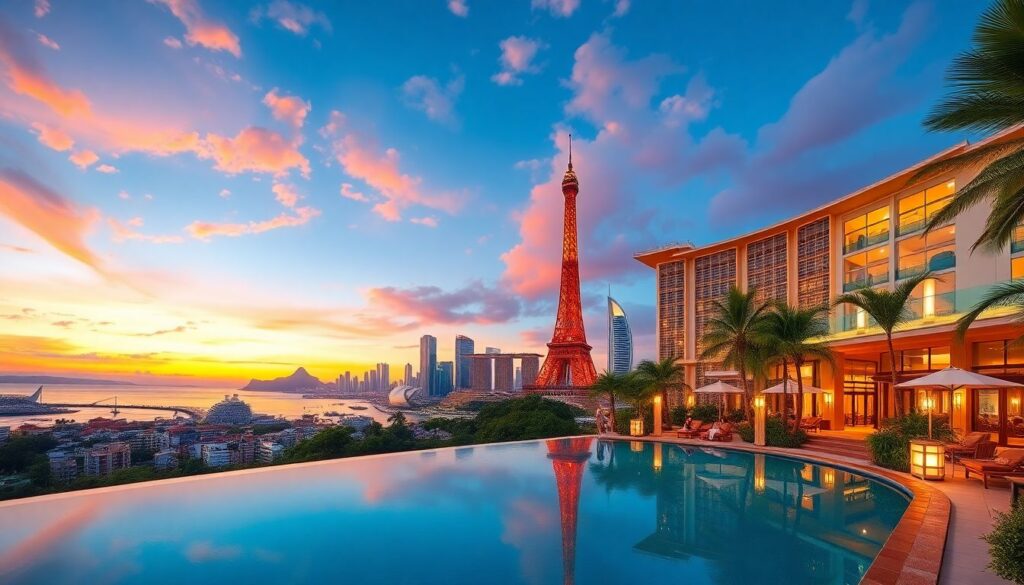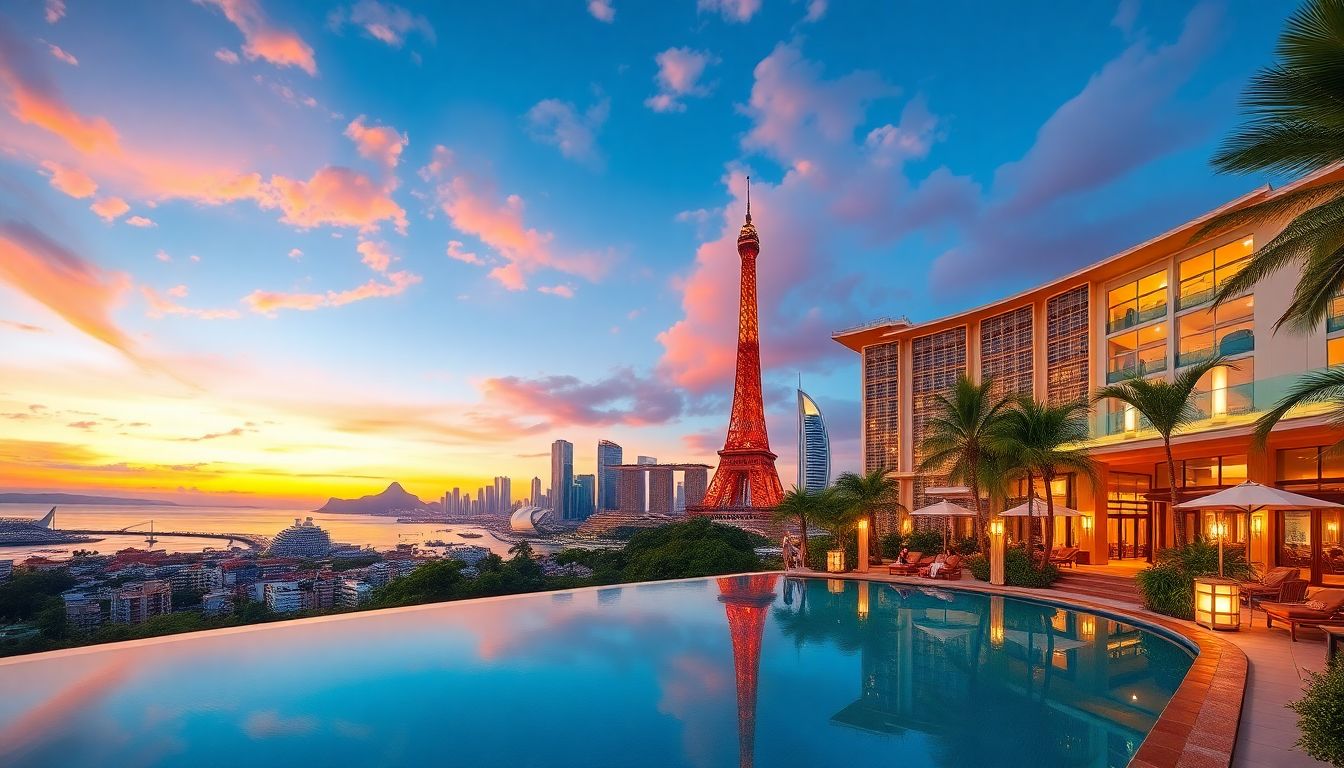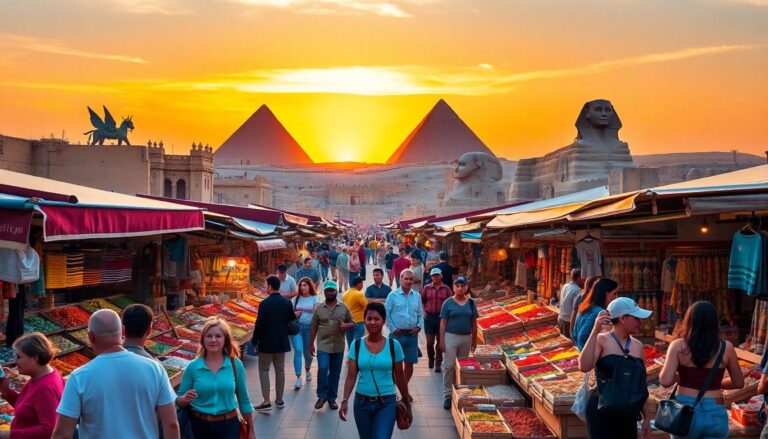Learn About the Most Important Tourist Hotels in the World

Introduction
Iconic hotels are more than places to stay—they are landmarks, symbols of luxury, and part of the world’s travel culture. These hotels attract millions of visitors each year and help shape how the world views travel and hospitality. Understanding what makes these hotels special can unlock the stories of history, design, and culture behind them. Whether you’re a traveler or just curious, these landmarks reveal the magic of global tourism.
The Role of Iconic Hotels in Global Tourism
The Cultural and Historical Significance
Many of the world’s most famous hotels tell stories of the places they belong to. They reflect local history, styles, and trends, acting as living museums. For example, The Ritz Paris dates back over a century and has hosted countless celebrities and world leaders. Similarly, the Taj Mahal Palace in Mumbai stands with a history intertwined with Indian culture and independence. These hotels don’t just provide comfort—they showcase the identity of their home cities and countries.
Economic Impact on Local Destinations
Iconic hotels bring big money to their regions. They create jobs, boost local businesses, and help build a city’s reputation as a tourist hotspot. For example, the Burj Al Arab in Dubai attracts travelers from across the globe, contributing millions to the economy yearly. With millions of visitors seeking unique stays, these hotels fuel regional growth and generate brand buzz that benefits other local attractions.
Architectural and Design Marvels
Some hotels are famous for their architecture and design. They push the limits of engineering and set new trends in hotel architecture. Think of Marina Bay Sands in Singapore with its futuristic SkyPark or Bilbao’s Guggenheim Hotel inspired by modern art. These structures do more than house guests—they are showpieces that redefine what a hotel can look like. Their innovative designs often influence new hotel styles worldwide.
Premier Luxury Hotels That Define the Industry
The Ritz Paris: A Symbol of Elegance
The Ritz Paris is a symbol of timeless luxury. Opened in 1898, this hotel has hosted royalty, movie stars, and political leaders. Its grand façades and lavish interiors make it a true icon. Guests enjoy fine dining, elegant rooms, and world-class service. Staying here isn’t just about the room—it’s about experiencing a piece of history that exudes class.
Burj Al Arab, Dubai: The World’s Only Seven-Star Hotel
Perched on its own island, the Burj Al Arab’s sail-shaped design is instantly recognizable. Built with ultimate luxury in mind, it’s often called a seven-star hotel. It boasts helicopter transfers, opulent suites, and private butlers. This hotel’s reputation for luxury is unmatched, making it a must-see for anyone wanting a once-in-a-lifetime experience.
The Beverly Hills Hotel, Los Angeles: Hollywood Glamour
Known as “The Pink Palace,” this hotel is a favorite among celebrities. It’s been a Hollywood staple since 1912. Guests enjoy exclusive pools, top-tier restaurants, and a vibe of old Hollywood charm. Staying here means becoming part of Tinseltown’s glamorous history.
Tips for choosing a luxury hotel:
- Look for historical significance combined with modern touches.
- Prioritize personalized service and unique experiences.
Hotels Known for Architectural Innovation
Marina Bay Sands, Singapore: SkyPark and Infinity Pool
Marina Bay Sands is an engineering marvel with its three towers topped by a massive SkyPark. The infinity pool offers panoramic city views, making it a photographer’s paradise. The hotel changed Singapore’s skyline and drew global attention to its innovative design.
The Guggenheim Bilbao Hotel, Spain: Art and Architecture Fusion
Inspired by the famous Guggenheim Museum, this hotel blends modern architecture with local culture. Its organic shape and metal exterior look like a work of art. Staying here offers a chance to sleep inside a piece of contemporary design.
The Hotel Marques de Riscal, Spain: Viticulturist’s Dream
Frank Gehry designed this hotel with bold, twisting shapes and bright colors. Built in a vineyard, it combines art, wine, and luxury effortlessly. It’s a favorite for wine lovers and art enthusiasts alike.
Tips for selecting architecturally unique hotels:
- Look for stories behind the design.
- Such hotels often provide memorable and photogenic stays.
Hotels That Define Their Regions
The Savoy, London: Classic British Elegance
The Savoy has been a London icon since 1889. Its rich history includes hosting royalty and famous artists. The hotel mixes old-world charm with modern amenities, making it perfect for those wanting regional style with comfort.
The Taj Mahal Palace, Mumbai: Cultural and Heritage Landmark
Built in 1903, this hotel symbolizes Indian pride and resilience. Its Indo-Saracenic architecture combines Gothic, Indian, and Islamic influences. Staying here immerses guests in Indian history and culture.
The Mandarin Oriental, Bangkok: Southeast Asian Charm
This hotel balances traditional Thai style with modern luxury. It offers signature Thai massages, authentic cuisine, and stunning river views. It’s perfect for travelers seeking regional authenticity.
Tips for regional hotels:
- Focus on hotels that showcase local architecture and tradition.
- They often provide a deeper cultural experience.
The Future of Iconic Tourist Hotels
Sustainability and Eco-Friendly Innovations
Guests now care about environmental impact. Many top hotels are adopting green practices, like solar power and water conservation. Newer hotels aim to reduce their carbon footprint while maintaining luxury.
Incorporation of Technology and Smart Services
From digital check-ins to AI-powered concierge apps, technology makes stays smoother. Expect future hotels to have virtual reality previews or smart rooms that adapt to your preferences.
Emerging Destinations and Hotels
New landmarks are rising in places like Africa, Southeast Asia, and Latin America. These regions are creating fresh icons that attract travelers seeking new adventures.
Tips to stay ahead:
- Follow travel news for upcoming hotel openings.
- Choose hotels that invest in eco-friendly and tech innovations.
Conclusion
Iconic hotels are more than places to rest—they are part of our travel stories, full of history, art, and wonder. Their unique designs and cultural roots shape how travelers experience new destinations. Whether you seek luxury, architecture, or regional charm, these landmarks promise unforgettable memories. Learning about them deepens your appreciation for global hospitality excellence. Keep exploring, and you’ll find some of the most inspiring places in the world are just a booking away.






